© 2025 MJH Life Sciences™ , Patient Care Online – Primary Care News and Clinical Resources. All rights reserved.
Hygiene and Health: 8 Pristine Questions
Sample: The hygiene hypothesis states that early exposure to germs reduces the immune system’s ability to resist infections in later years. True or false?
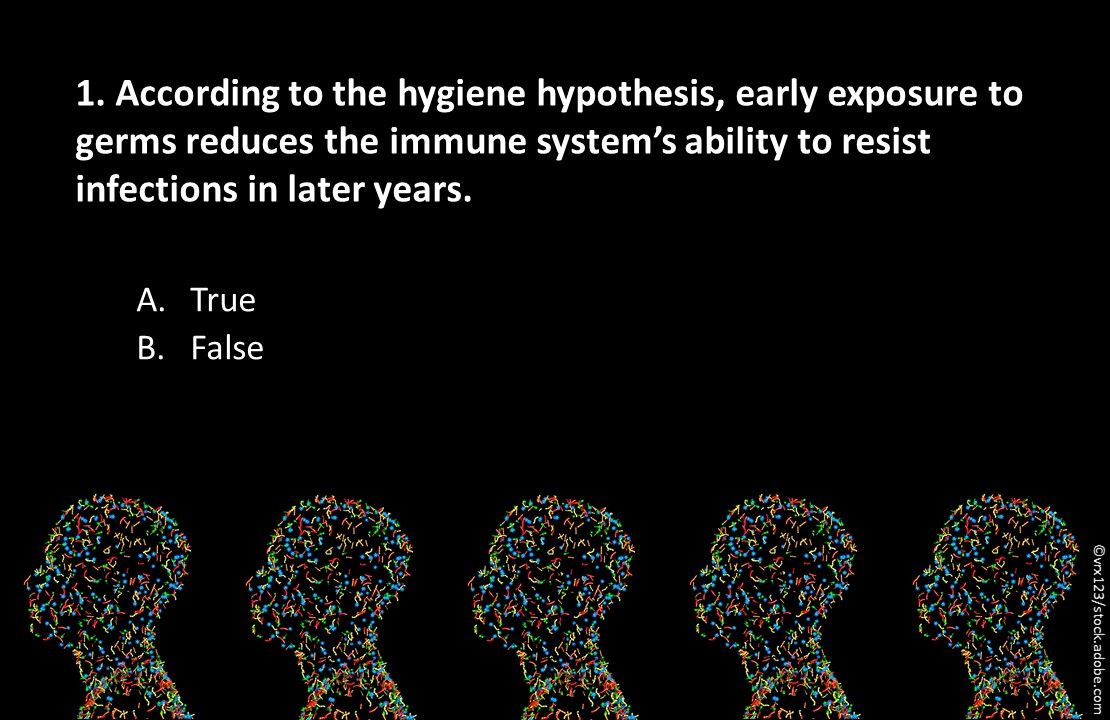
Question 1. True or false? According to the hygiene hypothesis, early exposure to germs reduces the immune system’s ability to resist infections in later years.
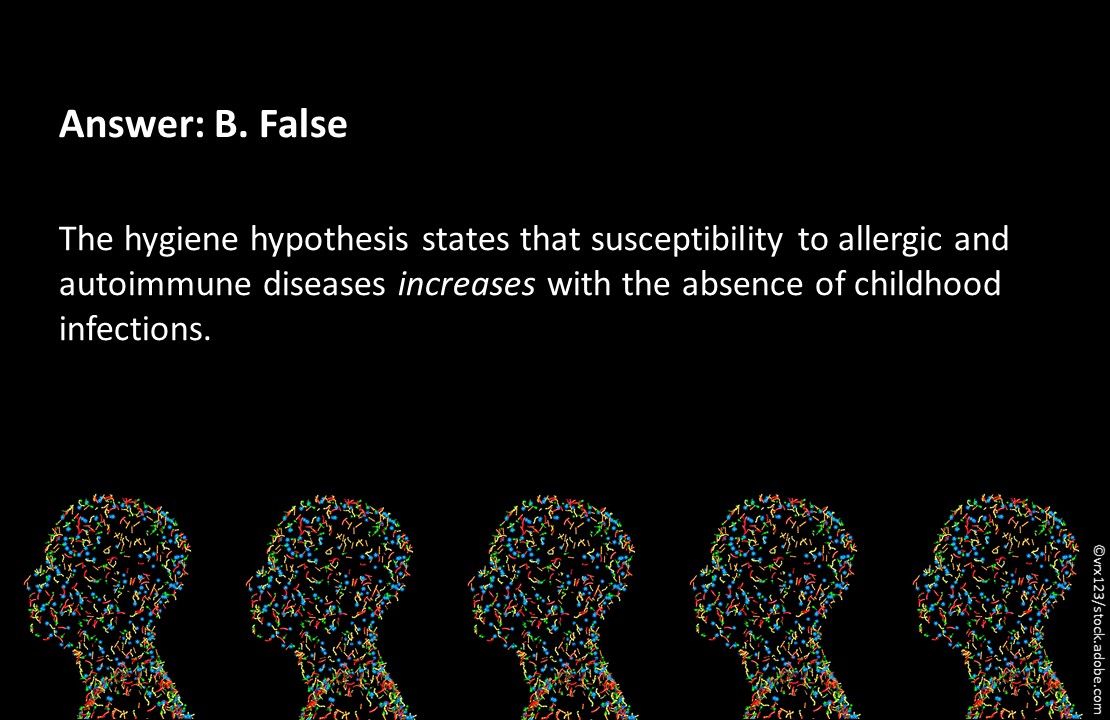
Answer: B. False. The hygiene hypothesis states that susceptibility to allergic and autoimmune diseases increases with the absence of childhood infections.

Question 2. Exposure to infections and commensal microorganisms in childhood educates the immune system to respond appropriately to which kind of stimuli?

Answer: C. Innocuous and dangerous. The immune system is educated to respond appropriately to both kinds of stimuli with exposure to childhood infections and commensal microorganisms. Allergic and autoimmune disease result from aberrant responses to innocuous stimuli.
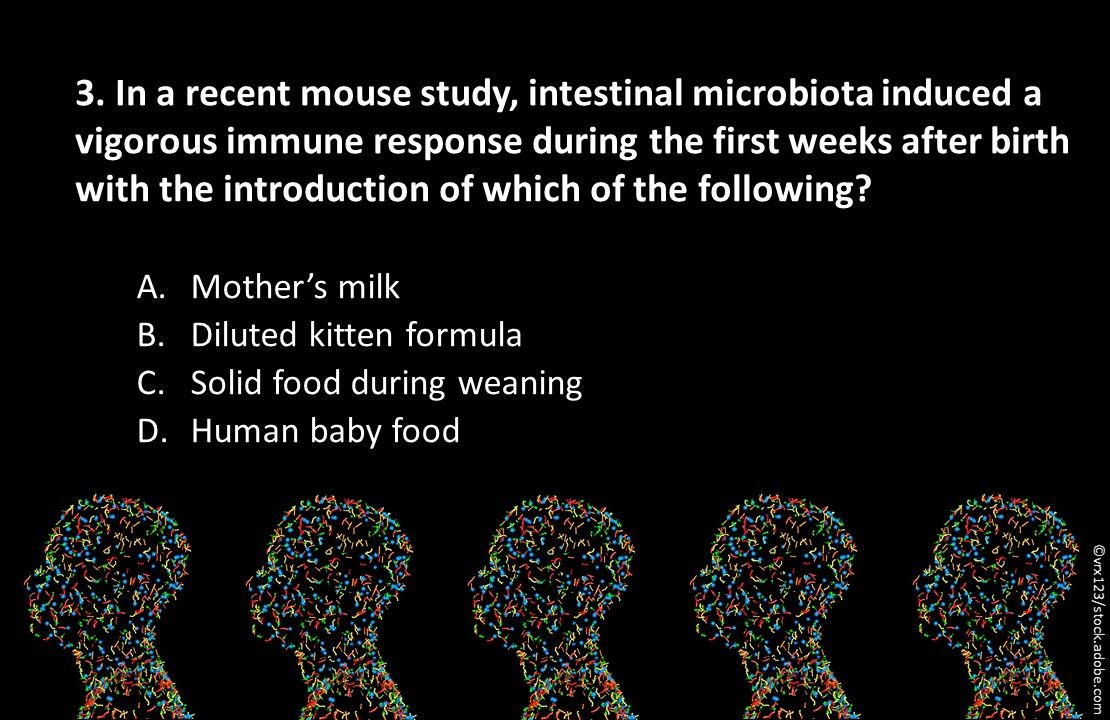
Question 3. In a recent mouse study, intestinal microbiota induced a vigorous immune response during the first weeks after birth with the introduction of which of the above?
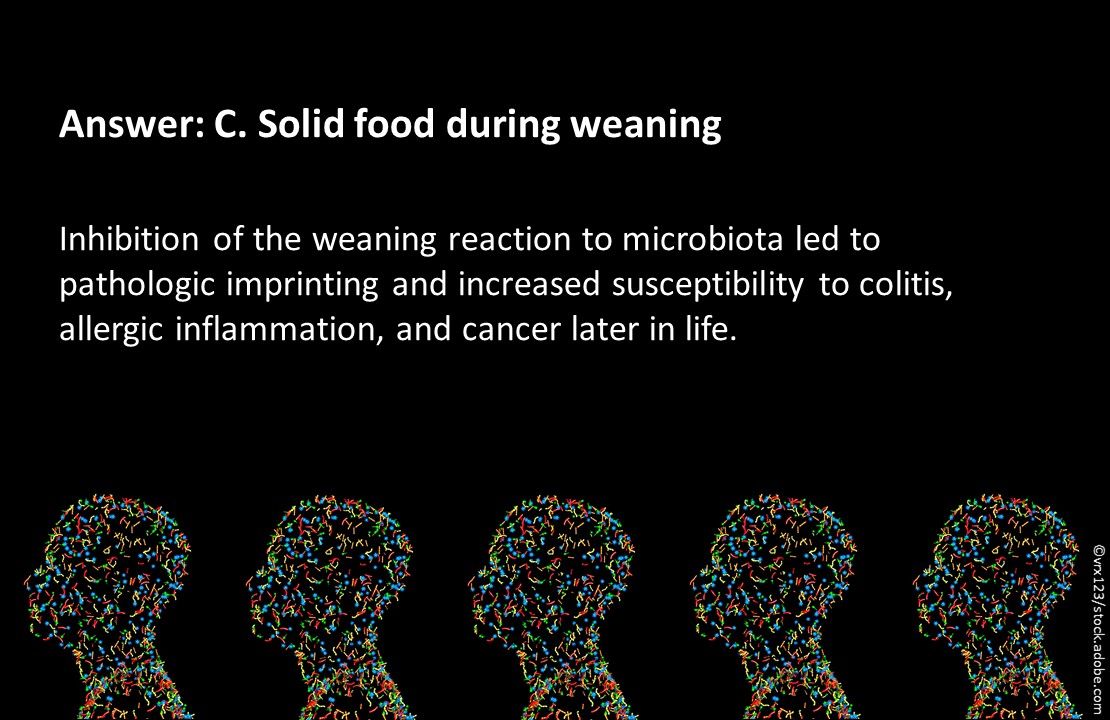
Answer: C. Solid food during weaning. A recent mouse study found that inhibition of the weaning reaction to microbiota led to pathologic imprinting and increased susceptibility to colitis, allergic inflammation, and cancer later in life.
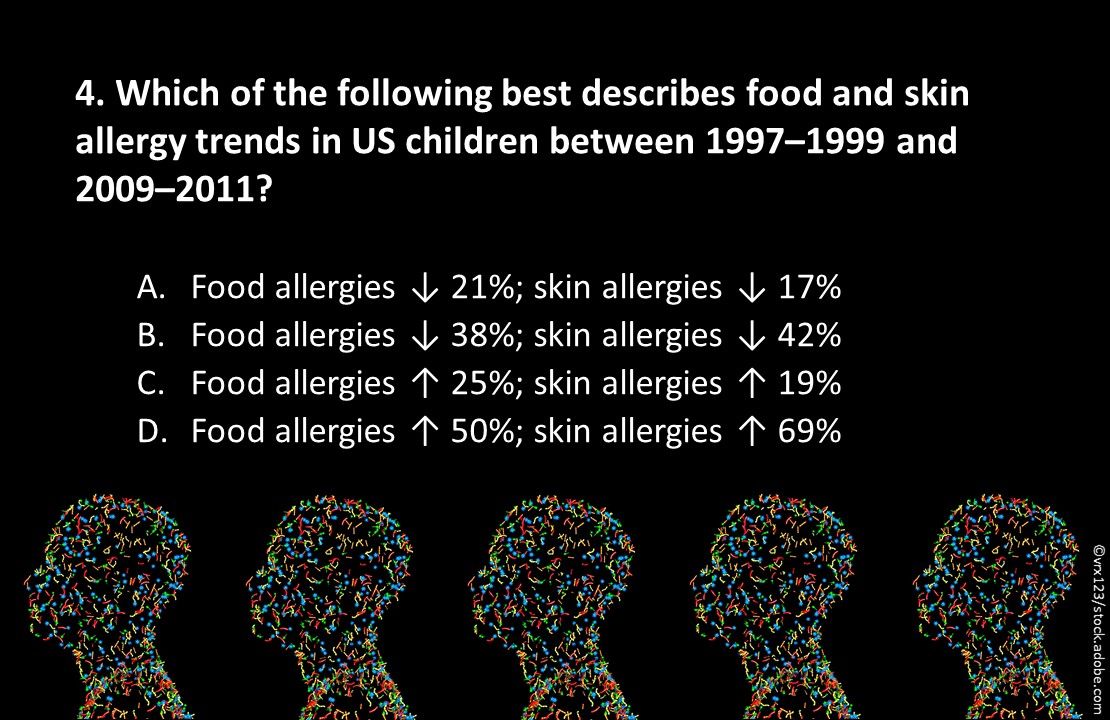
Question 4. Which of the above best describes food and skin allergy trends in US children between 1997–1999 and 2009–2011?
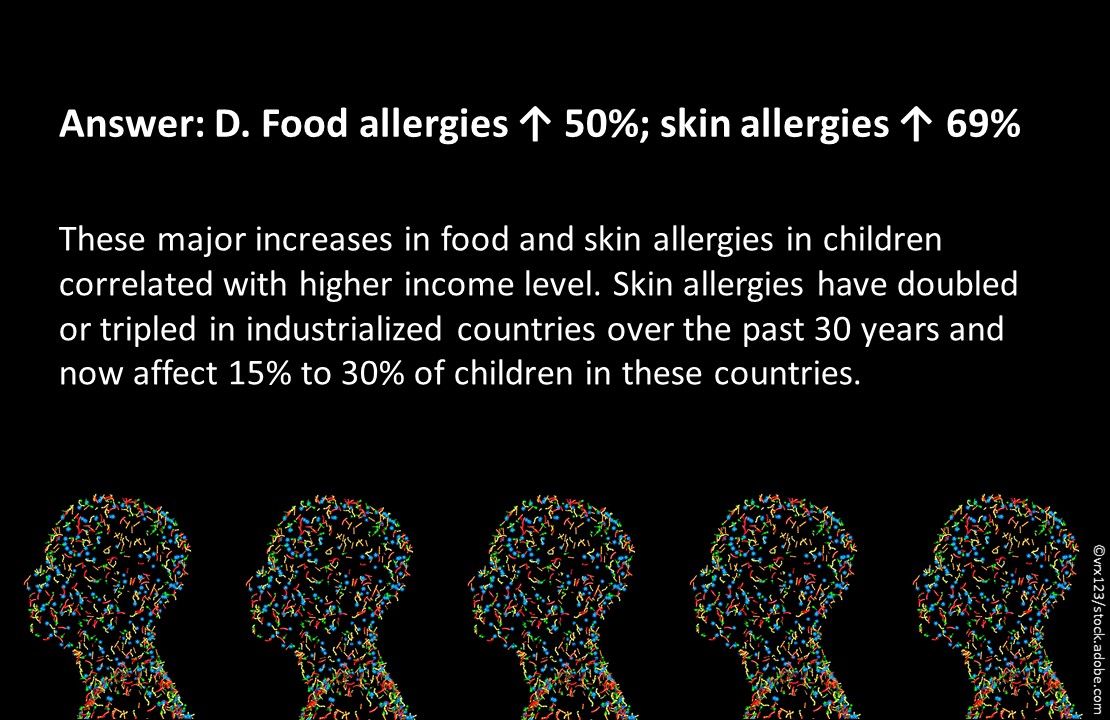
Answer: D. Food allergies increased 50%; skin allergies increased 69%. These major increases in food and skin allergies in children correlated with higher income level. Skin allergies have doubled or tripled in industrialized countries over the past 30 years and now affect 15% to 30% of children in these countries.
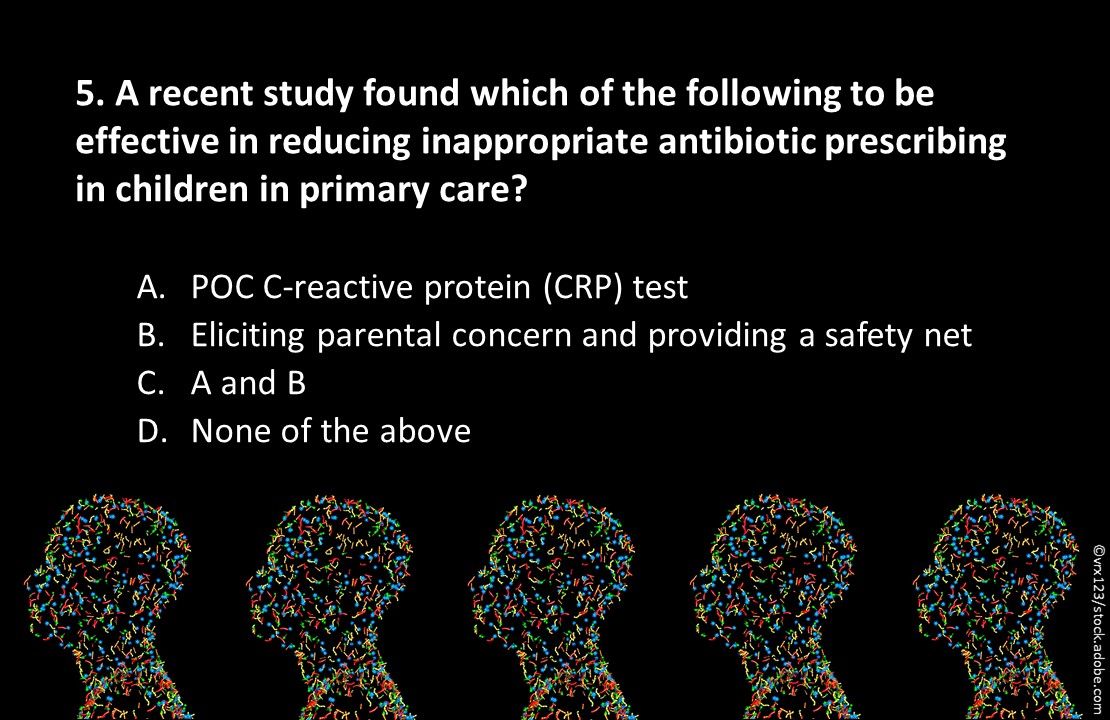
Question 5. A recent study found which of the above to be effective in reducing inappropriate antibiotic prescribing in children in primary care?
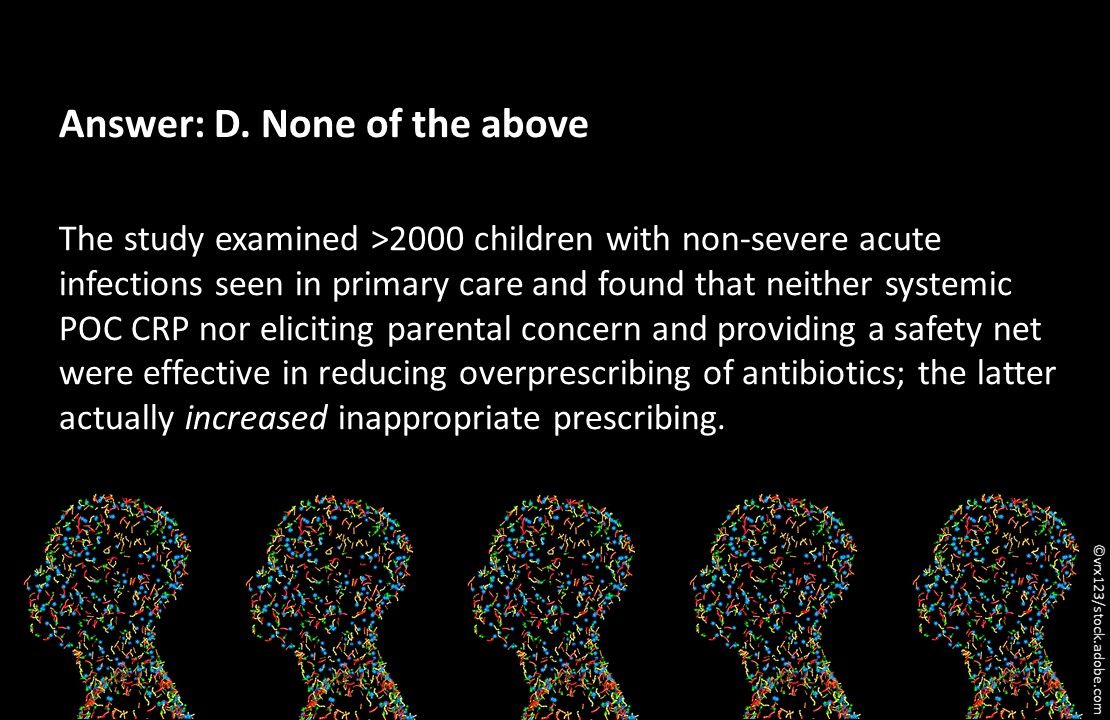
Answer: D. None of the above. The study examined >2000 children with non-severe acute infections seen in primary care and found that neither systemic POC CRP nor eliciting parental concern and providing a safety net were effective in reducing overprescribing of antibiotics; the latter actually increased inappropriate prescribing. Researchers suggested that family physicians need more training in handling parental concern without inappropriately prescribing antibiotics.
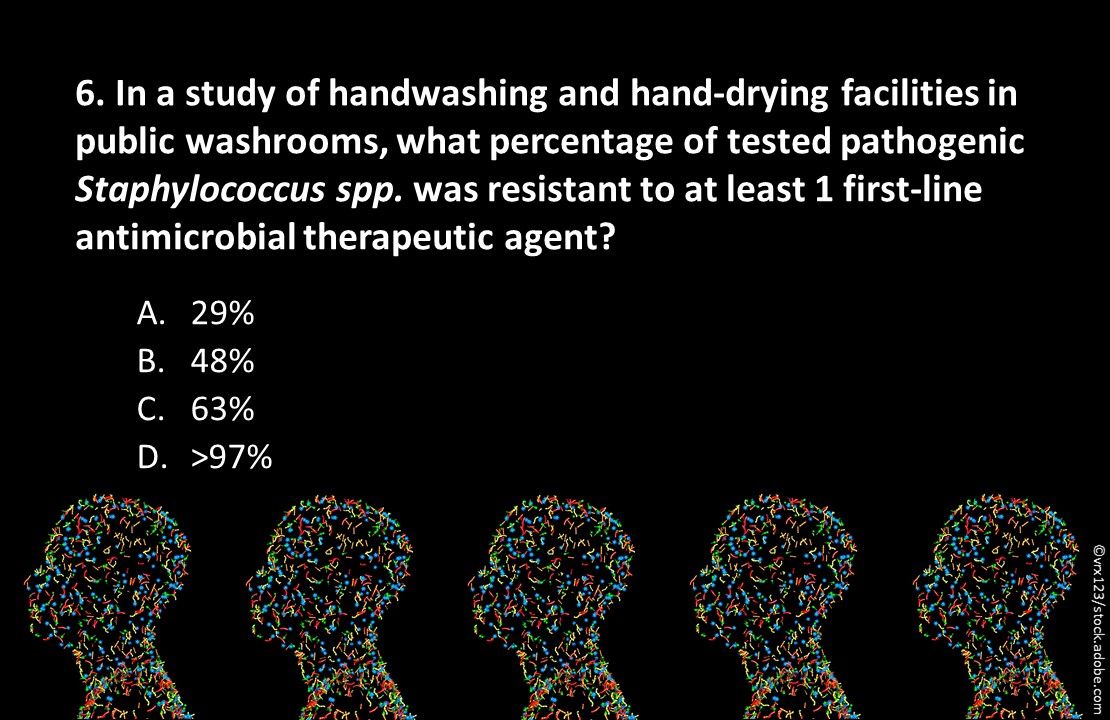
Question 6. In a study of handwashing and hand-drying facilities in public washrooms, what percentage of tested pathogenic Staphylococcus spp. was resistant to at least 1 first-line antimicrobial therapeutic agent?
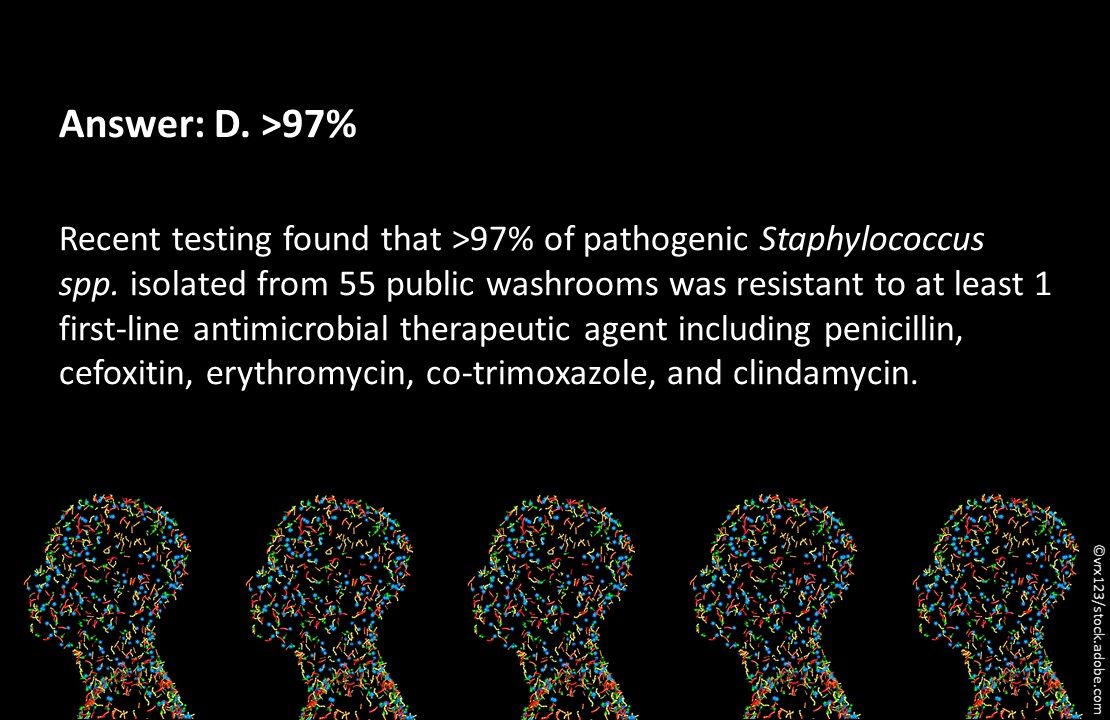
Answer: D. >97%. Recent testing found that >97% of pathogenic Staphylococcus spp. isolated from 55 public washrooms was resistant to at least 1 first-line antimicrobial therapeutic agent including penicillin, cefoxitin, erythromycin, co-trimoxazole, and clindamycin.
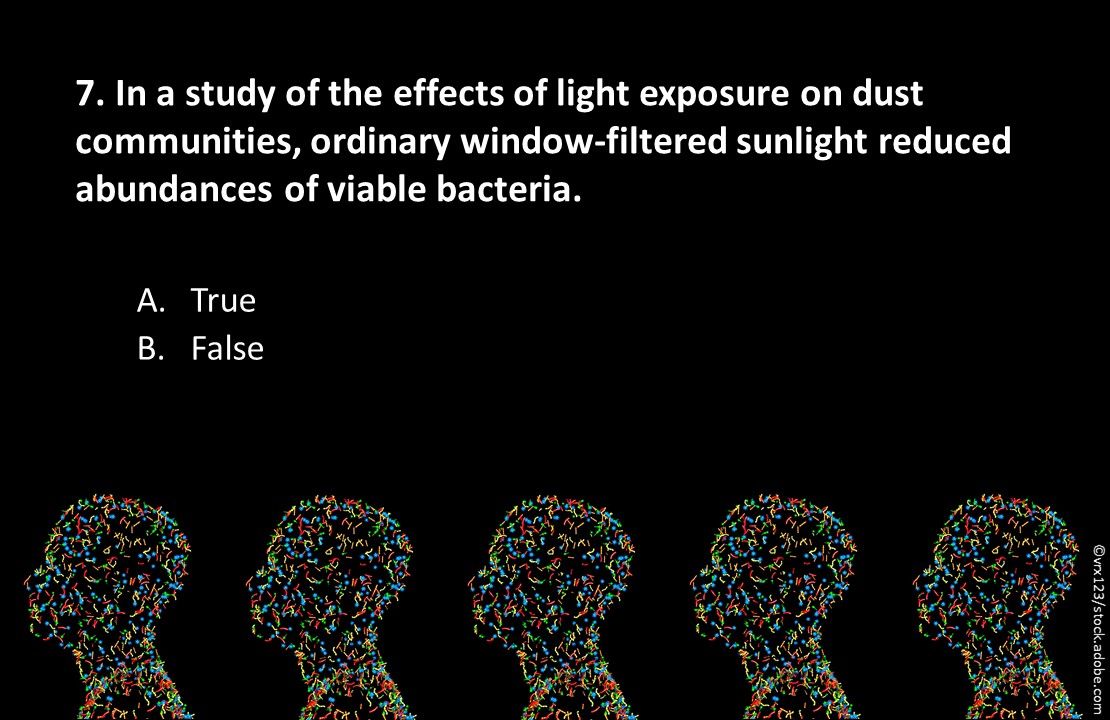
Question 7. True or false? In a study of the effects of light exposure on dust communities, ordinary window-filtered sunlight reduced abundances of viable bacteria.
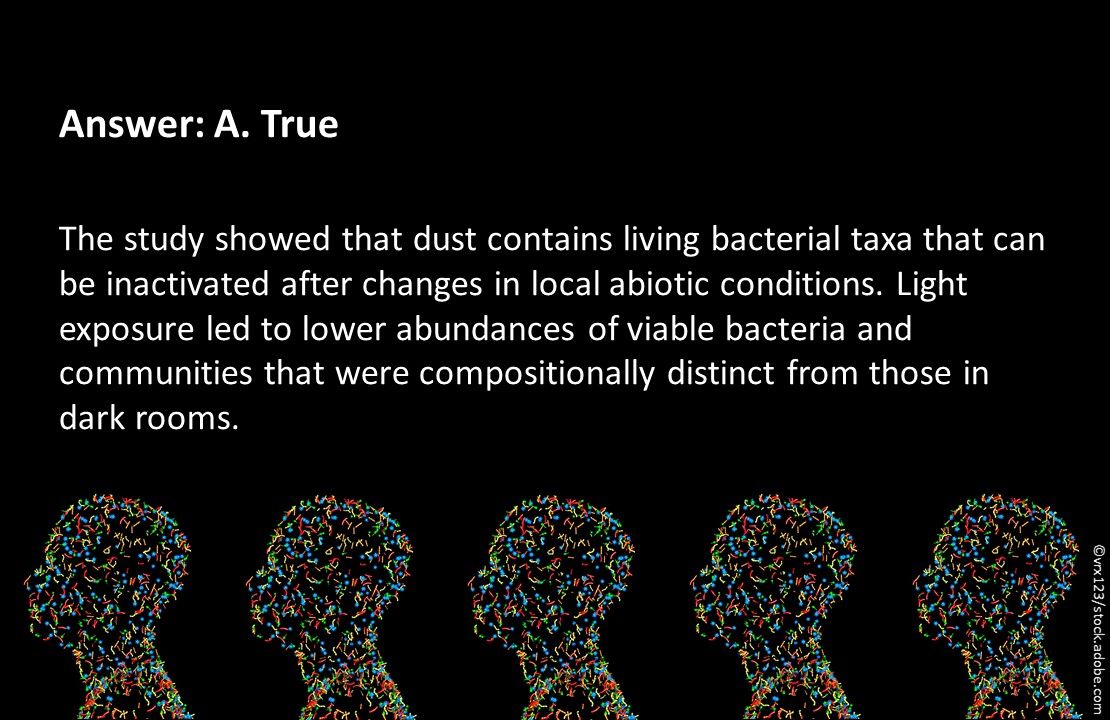
Answer: A. True. The study showed that dust contains living bacterial taxa that can be inactivated after changes in local abiotic conditions. Light exposure led to lower abundances of viable bacteria and communities that were compositionally distinct from those in dark rooms.
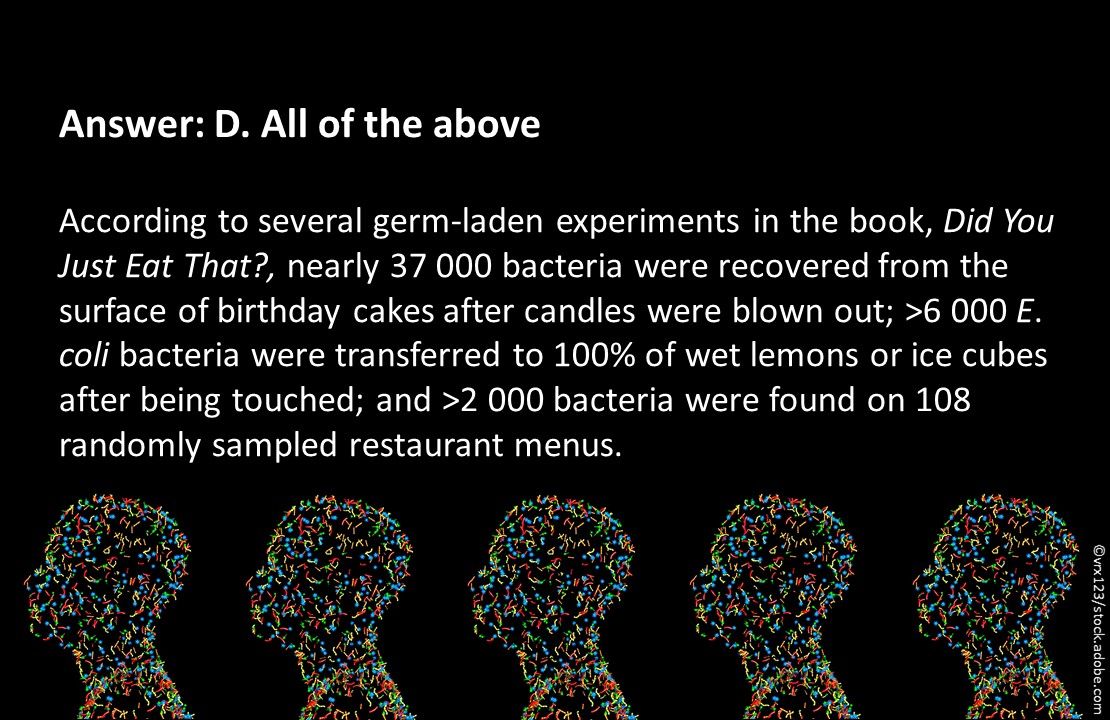
Answer: D. All of the above. According to several germ-laden experiments in the book, Did You Just Eat That?, nearly 37 000 bacteria were recovered from the surface of birthday cakes after candles were blown out; >6 000 E. coli bacteria were transferred to 100% of wet lemons or ice cubes after being touched; and >2 000 bacteria were found on 108 randomly sampled restaurant menus.
Recent reports and studies have focused on the relationships between hygiene and health, in particular, the hygiene hypothesis-what effects a sanitized environment may have on the development of the human immune system. Take this brief quiz to test your knowledge of the latest developments and research findings.
Related Content:





